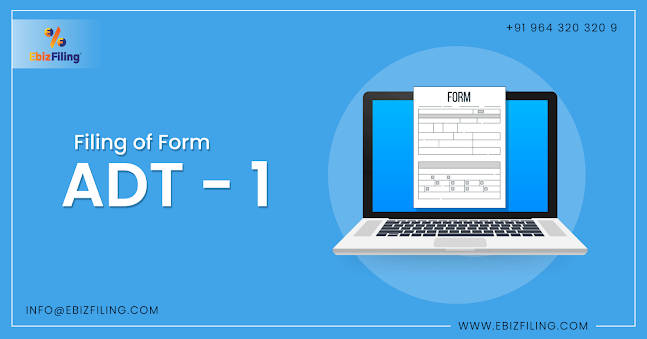As per the Companies Act 2013, companies are mandated to inform the ROC (Registrar of Companies) in a specific manner about the appointment of an auditor through Form ADT-1. This article provides detailed information on the filing fees for ADT-1, the process of filing Form ADT-1 with MCA (Ministry of Corporate Affairs), the deadline for submitting ADT-1, and the necessary documents required for ADT-1 filing.
When to file Form ADT-1 to MCA?
According to the Companies Act 2013, the Form ADT-1 must be filed with the Registrar of Companies (ROC) within 15 days of the Annual General Meeting at which the Auditor was appointed or reappointed. In the case of a newly incorporated company, the Form ADT-1 must be filed within 15 days of the first board meeting. This meeting, in which the board of directors designates the company's auditor, must be held within 30 days of establishment.
Some important points to keep in mind while filing Form ADT-1
It is the sole responsibility of the company to file Form ADT-1, and not that of the auditor.
It is mandatory to file Form ADT-1 regardless of whether a company is listed, private, public, unlisted, or any other type of company.
If an auditor is appointed as a casual vacancy in a company, the company must also file Form ADT-1.
While it is not necessary to file Form ADT-1 at the time of the first auditor appointment, it is recommended to do so.
Documents required to be attached with Form ADT 1
The list of documents that must be attached with Form ADT-1 is as follows:
The Auditor’s written approval is required for the appointment.
The company’s board resolution copy or a resolution passed in AGM (Annual General Meeting) needs to be attached.
A certificate from the Auditor stating that she or he or it is not disqualified or ineligible to serve as an Auditor under Section 141.
A copy of the company’s disclosure to the auditor.
Process to file Form ADT-1 with MCA
Here are the steps to file Form ADT-1:
Obtain a digital signature certificate (DSC)
Obtain director identification number (DIN)
Download Form ADT-1from the MCA website.
Fill in the company's name, registered office address, and other details as required.
Provide the details of the auditor appointed or reappointed, including name, address, PAN, and membership number.
Attach the necessary documents, such as the board resolution for the appointment of the auditor and the auditor's consent letter.
Once the form is complete, verify it using the DSC of the director who signed it.
Once the form is verified, submit it electronically to the Registrar of Companies (ROC).
After submission, the fee for Form ADT-1 must be paid online.
After successful submission of Form ADT-1 and payment of the fee, an acknowledgment will be sent to the registered email address.
Fee Structure to file Form ADT-1
The fee structure for filing Form ADT-1 depends on the share capital value of the business. The fee structure is as follows:
If the share capital value is less than INR 1 Lakh, the fee is INR 200.
If the value is in between INR 1,00,000 to INR 4,99,999, the fee is INR 300.
If the share capital value is in between INR 5,00,000 to INR 24,99,999, the fee is INR 400.
If the value is in between INR 25,00,000 to INR 99,99,999, the fee is INR 500.
If the share capital value is more than INR 1,00,00,000, the fee is INR 600.
If a company does not have share capital, the fee is INR 200.
Other Annual Compliance for Private Limited Company
Here are some annual compliance requirements for Private Limited Companies in India:
Annual General Meeting (AGM): Every private limited company is required to hold an AGM every year, within six months from the end of its financial year. The purpose of the AGM is to present the company's financial statements, appoint or re-appoint directors, and declare dividends.
Financial Statements: Every private limited company must prepare financial statements, which include a balance sheet, profit and loss account, cash flow statement, and notes to accounts. These statements must be audited by a qualified chartered accountant.
Income Tax Returns (ITR): Every private limited company must file its income tax returns on or before the due date, which is usually July 31st of each year. It is mandatory for all companies to file ITR, irrespective of their profitability.
Annual Return Filing: Every private limited company must file its annual return with the Registrar of Companies (ROC filing) within 60 days from the date of the AGM. The annual return provides information on the company's shareholding pattern, directors, and other statutory details.
Conclusion
Form ADT-1 is an important document for the appointment of an auditor in a company, which must be filed within 15 days of the annual general meeting (AGM) or the first board meeting, depending on the situation. All types of firms, including Listed or Unlisted, Private or Public, are required to file Form ADT-1, except for the first appointment of an auditor. It is the responsibility of the company to file Form ADT-1 with the Registrar of Companies (ROC) to inform them about the appointment of an auditor.


Comments
Post a Comment